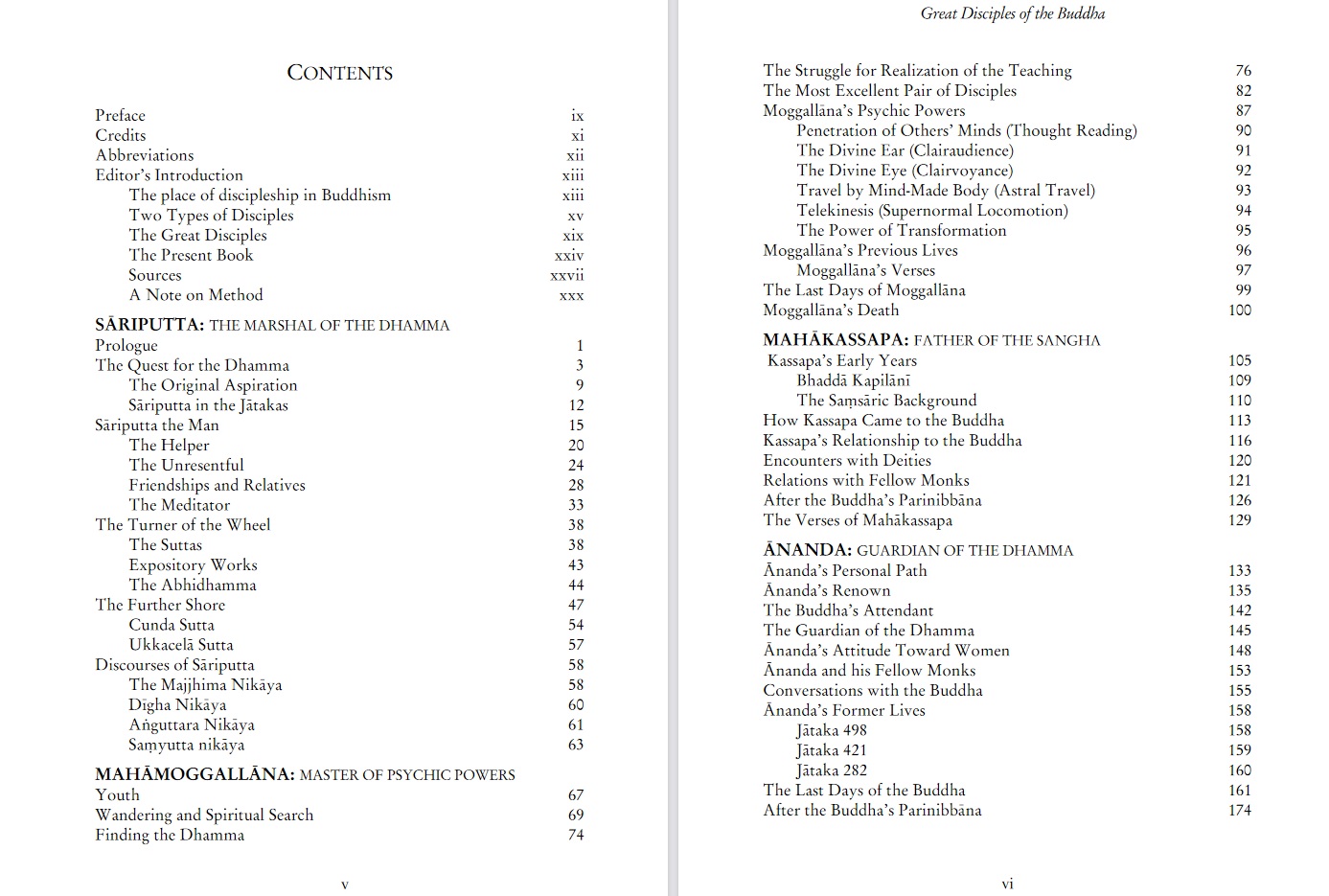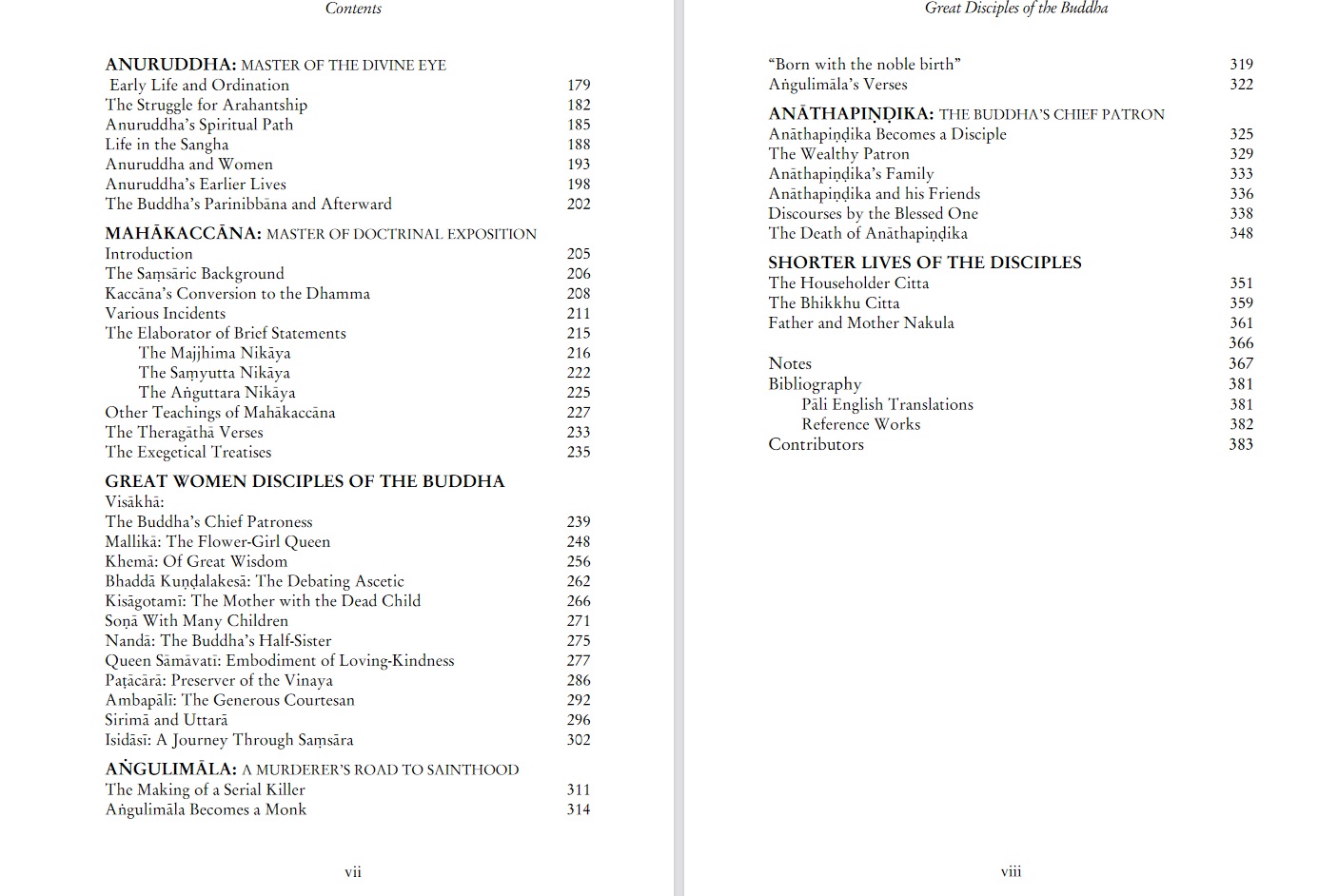While in recent years in the West oceans of ink have been expended onbooks dealing with the Buddha and his Teaching, the first two Jewelsof Buddhism, the coverage given to the third Jewel, the Sangha, hasbeen far from adequate. Even the meaning of the word “sangha” hasbeen a matter of dispute, while for those without access to the originalPāli texts a dense cloud of obscurity still hangs over the Buddha’s origi-nal nucleus of disciples. This gap is all the more glaring because thevery measure of the Buddha’s success as a spiritual teacher is to bedetermined by his skill in training his disciples. The canonical verse ofhomage to the Buddha hails him as “the unsurpassed trainer of personsto be tamed,” and thus the acid test for the validity of this claim mustbe the mettle of the men and women who submitted to his guidance. Just as the sun is valued not only for its own intrinsic radiance but alsofor its ability to illuminate the world, so the brilliance of the Buddha asa spiritual master is determined not only by the clarity of his Teachingbut by his ability to illuminate those who came to him for refuge andto make them luminaries in their own right. Without a community ofdisciples to testify to its transformative power, the Teaching, theDhamma, would be merely a package of doctrines and formal prac-tices, admirably lucid and intellectually rigorous, but remote from vitalhuman concerns. The Dhamma comes to life only to the extent that ittouches life, ennobling its followers and turning them into models ofwisdom, compassion, and purity.
The present book is an attempt to fill this gap in Western Buddhistliterature with living portraits of twenty-four of the most distinguisheddisciples of the Buddha. The book evolved from a series of individualtracts on the great disciples issued by the Buddhist Publication Society(BPS) under its well-known imprint, The Wheel. The first biographyto appear was The Life of Sāriputta by the Venerable NyanaponikaThera. This was first published in 1966 as an independent monograph,with no intention to initiate an ongoing series. In the same year, how-ever, the German Buddhist author Hellmuth Hecker began publishingshort biographical profiles of the great disciples in the German Bud-dhist periodical Wissen und Wandel (established in 1955 by PaulDebes). Over the next twenty years Wissen und Wandel carried forty-one such portraits, many quite short.
In the late 1970s the idea occurred to Ven. Nyanaponika, then theeditor of the BPS, to follow up his study of Sāriputta with a line ofWheel titles on the other great disciples, using the articles by Dr.Hecker as a basis. Thus between 1979 and 1989 there appeared, as indi-vidual Wheel booklets, portraits of Mahāmoggallāna, Ānanda, Aṅgu-limāla, Anāthapiṇḍika, Mahā-kassapa, Anuruddha, and eightprominent women disciples. These had been translated into Englisheither by Ven. Nyanaponika himself or by others at his request.Finally, in 1995 I wrote a booklet on the Elder Mahākaccāna, whichwas the last to appear in the series.
Almost all the original articles by Dr. Hecker were considerablyenlarged by Ven. Nyanaponika with additional material gathered fromthe Pāli Canon and its commentaries, and deepened with his owninsightful reflections. In preparing this comprehensive volume fromthe original booklets I have made substantial alterations in almost allthe older versions and added still more material to give a fuller pictureof the disciple under scrutiny. The chapter on the women disciples hasbeen expanded by the addition of four profiles that were not in theoriginal Wheel, although a full-length treatment of individual womencomparable to the studies of the leading male disciples was not possibleowing to the sparsity of source material. A thorough stylistic revisionof the original portraits was also necessary.
I have retranslated almost all the verses, which in the Wheel book-lets were often quoted from older translations composed in a style thatwould strike present-day readers as stilted. To leaven the proseaccounts I have added still more verses, particularly from the Ther-agāthā and Therīgāthā. Unless indicated otherwise all verse translationsare my own, though my verse renderings from the two collections justnamed lean heavily upon the literal prose translations by K.R. Nor-man, published as Elders’Verses, parts 1 and 2.
I would like to thank my long-time assistant at the BPS, AyyāNyanasirī, who first reviewed the original Wheels with the idea of reis-suing them in a single volume. I also thank Mrs. Savithri Chandra-ratne, who diligently and accurately typed the manuscripts into thecomputer. I am grateful to Wisdom Publications for its collaborationin the publication of this book, particularly to Sara McClintock,whose editorial comments led to major improvements.
Bhikkhu Bodhi
CLICK HERE TO DOWNLOAD
TABLE OF CONTENTS



